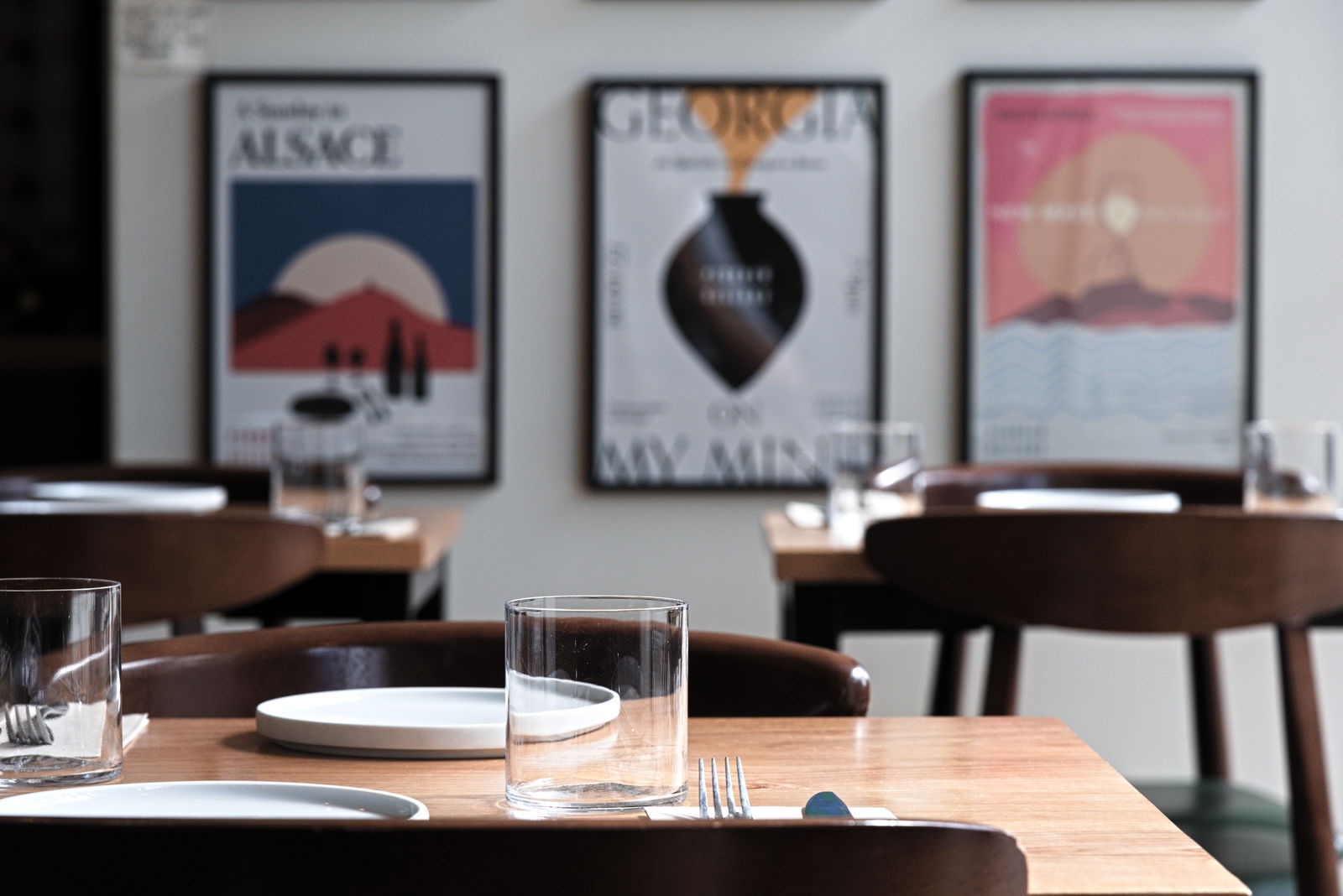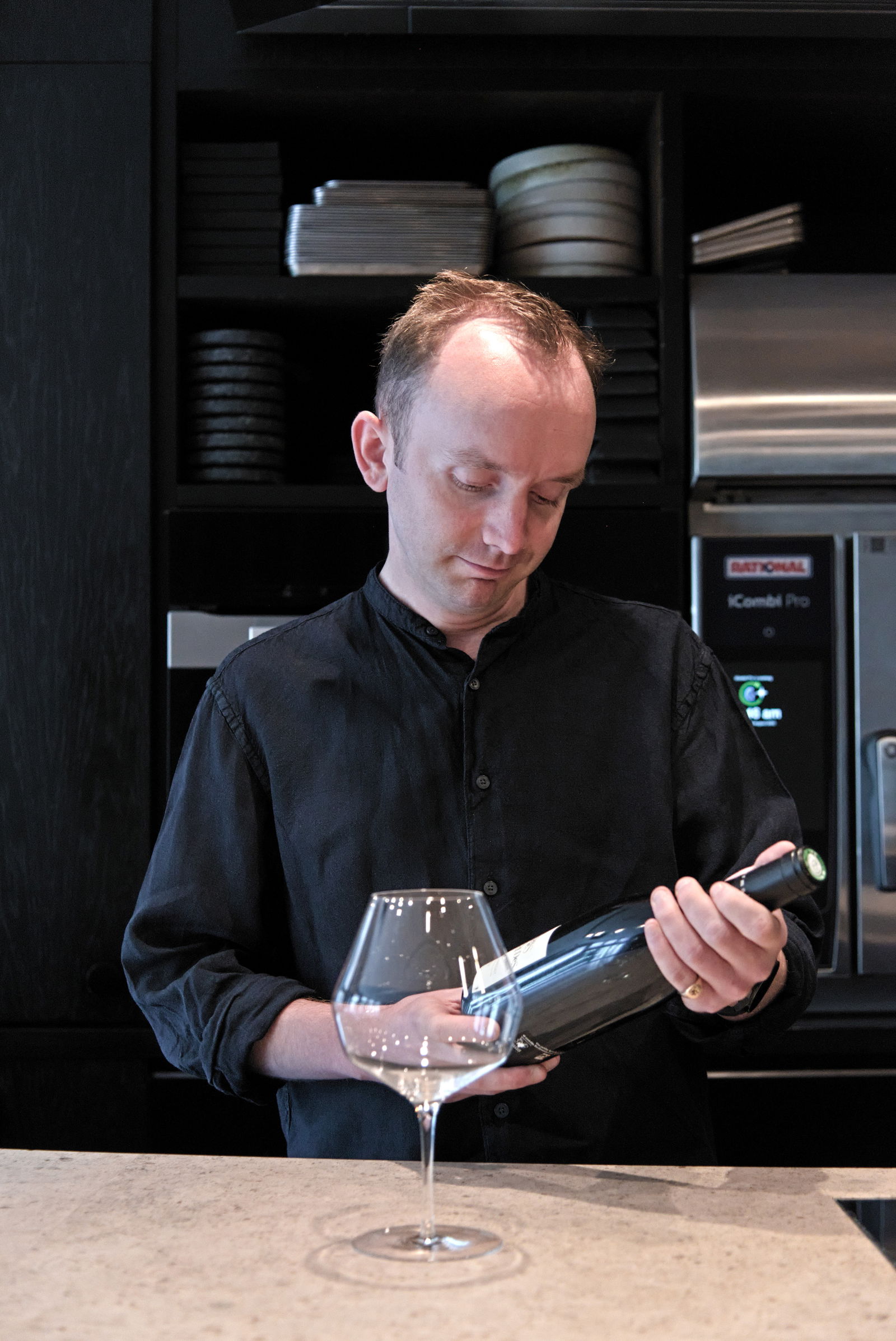BLOG
Sommeliers: Embracing a New Era
Jacopo Mazzeo Wine Culture

“The couple at number 12 wants to see you,” my assistant told me, returning from what I immediately knew was going to reveal itself as a tricky table to please. At the time, I was managing the wine list of a charming modern-British restaurant with rooms in the New Forest, a fairytale-like national park about two hours’ drive southwest of London. The gentleman at number 12 couldn’t believe how a young waiter, wearing a bright pink shirt and a denim tie, could possibly offer him proper guidance on a wine list boasting over 400 entries.
My head-sommelier attire — checked shirt, jeans, and converse shoes — brought further disappointment. Only parrying the guest’s patronizing trivia allowed me to prove our worth – and allowed him to give our recommendations a chance. I wasn’t surprised. After all, the conventional understanding of a sommelier was, and still is, that of a professional who masterfully harmonizes sniffing and spitting for a living with the elegance and formal attire of a five-star hotel concierge.
But evolving societal needs have been gradually enriching the hospitality landscape with alternative, yet equally valid, approaches to wine service. Quality wine is now a central focus not just in traditional haute cuisine venues, but in a diverse array of dining settings too, from bistros to pizzerias.
This developing landscape is challenging the very definition of a sommelier, testing what her role should entail, his uniform look like, and their educational paths involve. A visit to three London-based friends, whose restaurants and approaches to wine service reflect the diversity of today’s hospitality industry, allowed me to uncover some common threads binding sommeliers together, and to gain a little further insight into the future of this profession.

Located in London’s elegant Mayfair district, Le Gavroche is a bastion of British francophile gastronomy. Established in 1967 by Michel and Albert Roux, and currently overseen by chef patron Michel Roux Jr., the restaurant harmoniously blends into its refined surroundings. Lush planters grace its wrought-iron railings. Inside, the lower ceilings and gentle, warm lighting create an intimate ambiance, while strategically placed mirrors add a sense of spaciousness. Sumptuous button-tufted seating and glistening silver trays firmly establish the restaurant’s tone.
We’re in classic, French haute cuisine territory here. One that’s played a pivotal role in the development of this country’s fine dining: Le Gavroche was the first British restaurant to be awarded one, two, and finally, in the 1980s, three Michelin stars. But patrons don’t flock to Le Gavroche just for its celebrated cuisine. Guests love its renowned, France-heavy, 2,500-bin wine list, too, managed by the formally trained chief sommelier Remi Cousin.
As he guides me through his cave du jour — the restaurant’s main indoor wine cellar: a sort of vinous rabbit hole — he shares the joys of handling such a rich and historically significant collection. “I inherited the wine list from my predecessor, David Galetti, who, in turn, received it from Thierry Tomasin,” he tells me. Behind dusty wine racks, a door at the rear of the cellar opens to an intricate labyrinth, eventually leading to eight claustrophobically narrow yet functional “alcoves” that serve as repositories for Le Gavroche’s ample supplementary stock and older vintages.
“The wine list has been built since 1967 so it features quite a few gems,” Remi proudly points out. “Palmer 1988, Ducru Beaucaillou 1988, Yquem 1981 in magnum, Jaboulet Hermitage La Chapelle 1995… Look at this one: San Leonardo 2003. Ever tried it? I’ve surprised quite a few guests with it — like classic Bordeaux on the Dolomites.”

Remi's approach to hospitality and sommellerie is deeply rooted in his years of extensive formal training. Somms here wear suits and uphold a strong ethos of diligence and discretion mingled with enthusiasm and commitment to the guest’s experience. “When I made the decision to become a sommelier, I was still in school. I was warned that I was going to have to work split shifts, apply myself, and study a lot. But I was so excited, too; I knew that’s what I had to do to achieve my goal,” he remembers.
This work ethic is becoming increasingly scarce in the hospitality sector, grappling as it is with a dramatic, ongoing staffing shortage. This challenge is particularly acute for fine dining establishments like Le Gavroche, where the need for well-trained staff is critical. The combination of Covid and Brexit further exacerbated staff-shortage challenges. “I remember the first months after lockdown. We were seriously understaffed; even Michel ended up polishing the glasses. At one point he was even doing the dishes,” Remi recalls. “He’s an incredible boss, always happy to support the team… The first month after lockdown, we were open for lunch and dinner. Michel saw that the situation wasn’t sustainable for the staff, so he decided to close for lunch and open a little bit earlier for dinner.”
This summer, Michel Roux Jr. shocked Britain’s gastronauts by announcing that Le Gavroche, after 56 years of service, is set to close its doors for good early next year. In his official statement, Chef Roux cited a pursuit of a better work-life balance as the primary reason for his decision. I can’t help wondering, however, if staffing challenges haven’t played a role in that decision, too.
High turnover rates are a well-known challenge within the hospitality industry, and skilled sommeliers — a profession that not only requires hospitality skills but some wine knowledge, too — are hard to find. “I have a glass polisher now,” says Remi, “but before I’d polish the glasses myself. That’s hospitality. It’s hard work but I don’t regret it. Positive feedback from guests really helps. That’s what matters in this job.”
Remi is a staunch advocate for formal education within the hospitality industry. Indeed he’s contemplating the idea of establishing his own sommelier school in Britain, as a potential future endeavor after his time at Le Gavroche. Yet, staffing issues mean that two out of three in Remi’s team aren’t trained somms at all. “One used to work as a bar manager. Another one started when he was 17 – though at that point he wasn’t even allowed to serve alcohol. I taught him how to carry a tray and polish glasses, and he gradually took on more responsibilities.” Training takes time – but sommeliers only have to give one month’s notice before leaving. “A month is nothing like enough to train a new sommelier. Maybe the solution is to rely on ‘flying sommeliers’, who you can hire as and when you need an extra hand in your team.”

After the grandeur of Mayfair, a one-hour bus ride transports me to Peckham. Located in London's southeast, Peckham is a distinct universe, boasting a vibrant multicultural fabric made up of an array of African, Caribbean, Asian and Eastern European communities. In the 1970s, the area struggled with high unemployment and significant urban decay. The tide began to turn towards the end of the century when Peckham became the focus of regeneration initiatives. They’ve worked well. Right outside Queens Road Station is Peckham Cellars, a hip wine bar and bistro that exemplifies the area’s ongoing gentrification process. The bistro is compact in size, well-lit, exuding a comforting laid-back atmosphere. Doubling up as a wine shop, shelves are lined up with bottles; colorful wine-themed posters brighten the walls, including an ongoing collection commissioned by the team itself for wine-related events.

The cuisine reflects Chef Pablo Urain Alfonso’s background, avoiding the constraints of a single gastronomic tradition by blending the flavors of the Basque Country’s San Sebastian with a broader European influence. Co-owner Ben McVeigh-Whitaker’s approach to hospitality is a far cry from the formality of haute cuisine. “Our style here is very much focused on sharing food,” Ben tells me. “This means that we don’t really pair wines with specific dishes… Of course, we make sure we don’t get any bad matches, but it’s more important that the guests get what they want to drink and have a great time.” With guests often ordering a variety of dishes, the wines (about 120, primarily sourced from Europe and all produced sustainably), are chosen to harmonize with larger food combinations rather than to pair with single courses.
An extensive selection of mineral-driven and aromatic whites is aimed at complementing Peckham Cellar’s signature Mediterranean-style small plates, while skin-contact whites and lighter reds provide plenty of good pairings once the food on the table increases in flavor intensity. With no heavy meat dishes on the menu — the most substantial being a lamb steak, served with honeycomb tomatoes and feta — the offer of rich, tannic reds that would overpower most of Peckham Cellar’s foods is limited.

In keeping with Peckham Cellar’s relaxed and informal atmosphere, wine service is intentionally casual, with no traditional sommelier figure present on the floor. Instead, the entire front-of-house team (from two members on a winter weekday to five on a sunny summer day) helps with wine service, with a special training emphasis on the house’s 20 wines by the glass. For further recommendations, general manager and “chief cork popper” Conor Strutt steps in, his approachability and lack of pretentiousness perfectly aligning with Peckham Cellar’s chilled and welcoming vibe. While staffing remains a key concern, the venue’s approach to wine service — coupled with the nimbly sized wine list, one-twentieth the girth of Le Gavroche’s — spares Ben the ongoing struggle of looking for highly trained sommeliers.
From Peckham, a couple of train rides take me back to central London. Soho’s Wardour Street in London’s media district teems with cool eateries, cafés, and bars. Hidden away on a quiet, unassuming side street, next to a blue plaque commemorating David Bowie’s endeavors at Trident Studios, is chef Simon Rogan’s Aulis restaurant. It’s a small, chef’s table style restaurant whose modern British food offering revolves entirely around a single, 16-course tasting menu. The venue’s sleek, fresh interior is subdivided into a small lounge and a similarly sized dining area. There, a crescent-shaped bar accommodates up to 12 people, all facing the minimalist kitchen space where the chef personally prepares the courses in front of the guests’ eyes. Sommelier and restaurant manager Charles Carron Brown orchestrates wine service. “Aulis is a very unique experience, very interactive,” he explains. “If the guest has a question about a dish, they can ask the person who’s cooked it – who’s standing right in front of them.”

The wine list is as minimal as the restaurant’s decor, with three tiers of wine-pairing flights and few additional labels available upon request. “I change pairings whenever even a small element of a dish changes,” says Charles. “This way I can easily introduce people to styles they might have not tried or heard of before.” One of the tasting flights, for instance, involves a Japanese Umeshu plum liqueur re-fermented with red wine. “It smells and tastes like summer red berries. It’s just so delicious -- people go ‘wow!’ when they try it.” Another flight opens with an English Pinot Noir from Artelium Estate, a winery backed by a “collective community”. “We rarely serve whole bottles. Most guests just go for the pairings. They’re part of the whole Aulis experience. Guests are with us for about three-and-a-half hours. That’s a lot of time for a meal in a restaurant, so I spend an extra few minutes with them to tailor their wishes and enhance their experience.”

Charles is a sommelier by trade, having begun serving wine 13 years ago at The Ritz and pursued formal education with both WSET and CMS. In addition to his wine-related duties however, he oversees the entire restaurant operation, enabling the venue to operate efficiently with a lean staff of just four. Combined with Charles’ smart-casual attire — a simple branded t-shirt, black jeans, and smart shoes — this staffing intimacy further enhances the luxurious, highly personalized Aulis experience. “I get involved in every single aspect of the guest experience. Multi-tasking is crucial here and personally I really enjoy it.” With its minimalist approach to both staffing and number of covers, Aulis’ chef’s table format is fine dining’s most radical response to the staffing challenges that are threatening the very survival of the hospitality industry.
Charles argues that the role of the sommelier has undergone significant changes in recent years, especially in the aftermath of Covid. The days of senior sommeliers whose role revolves exclusively around managing the wine list, he feels, are long gone. “Today, us somms should be getting involved in every single aspect of the guest experience… That’s why I never use the word ‘service’, I talk about ‘hospitality’ instead. That's what we offer. That all-encompassing feeling that makes people feel welcome.”
Sommeliers, of course, possess an intense passion for wine. Their enthusiasm is ever-present; they get genuinely excited about even the minutest nuances of a wine and the geekiest of the details. But what binds them together is their commitment to delivering a great experience for the guest. That’s the link between the time-honored formality of wine service in fine-dining establishments and the more relaxed and approachable atmosphere of wine-focused bistros. Different approaches, yes, but these venues all share and promote the essence of wine service: unwavering dedication to the guest’s wine-drinking experience.





